Sleeping pads come in all shapes and sizes, ranging from ultra-lightweight options for backpacking to bulkier and more comfortable models designed for camping a short distance from the car. Below we’ve broken down the best sleeping pads for 2014, with the leading options across all categories and price points. Perhaps more than any other type of outdoor gear, the sleeping pad market is dominated by one company, Therm-a-Rest, which has been making high quality sleeping pads for decades. There are, however, are a number of sleeping pads listed from other manufacturers like Big Agnes, Nemo, and Teton Sports.
Sleeping Pads for Backpacking
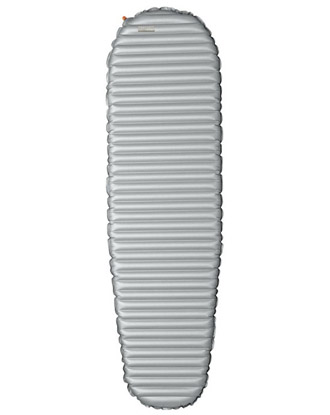
Therm-a-Rest NeoAir XTherm (from $149)
All things considered, the Therm-a-Rest XTherm is the best sleeping pad for backpacking on the market. It’s very comfortable, weighs less than a pound, insulates well, and packs down easily. What more can you ask for in a sleeping pad? The price of the XTherm is the biggest hurdle for most backpackers, and there are a couple of minor shortcomings as well. The pad doesn’t self-inflate, meaning that it must be blown up manually (this also means that it’s less likely to malfunction). And it makes a light crinkly noise when you turn over at night, particularly when not fully inflated. These are small issues, however, for a superb all-around sleeping pad from one of the most trusted manufacturers in the business.
Weight: 15 oz. (regular)
What we like: Lightweight, comfortable, and warm.
What we don’t: Pricey.
![]()
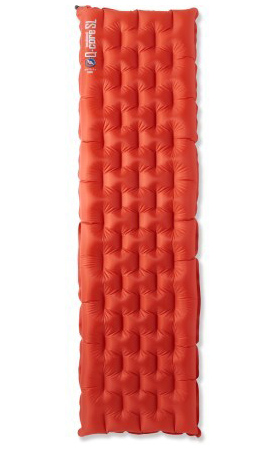
Big Agnes Q-Core SL (from $139)
Steamboat Springs-based Big Agnes does things a little differently than most outdoor gear companies, and they have a healthy following of fans to back it up. The Big Agnes Q-Core SL does reasonably well in all of the major categories—warmth, comfort, and packability—but the biggest difference is its thick quilted surface. Some backpackers feel that this makes the Q-Core SL more comfortable than competing options from Therm-a-Rest, but from our experience the pad feels a bit slippery. The Q-Core SL does offer 3.5-inches of cushioning, a full inch more than the XTherm above. For side sleepers and heavier backpackers, the Q-Core SL offers more cushion than any other lightweight sleeping pad.
Weight: 1 lb. 1 oz. (regular)
What we like: Thick and well cushioned.
What we don’t: Overkill for back sleepers.
![]()
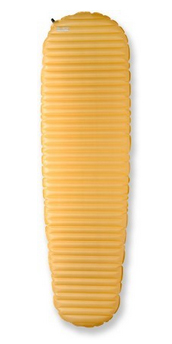
Therm-a-Rest NeoAir XLite (from $89)
The Therm-a-Rest NeoAir XLite is even lighter than the XTherm above, weighing in a lowly 12 ounces. To achieve this feat, Therm-a-Rest dropped some insulation and went with a reflective internal layer designed to return heat to the body and trap warm air between cells in the pad. The net result is that the XLite doesn’t offer quite the same warmth but the XTherm, but it will keep you reasonably warm and comfortable at night. Like most ultralight gear, the XLite has some issues with durability—some users have reported that the pad will deflate during the night after limited use. And like the XTherm, you can expect crunchy sounds when turning over at night.
Weight: 12 oz. (regular)
What we like: Cheaper than the XTherm.
What we don’t: Not as comfortable as other pads.
![]()
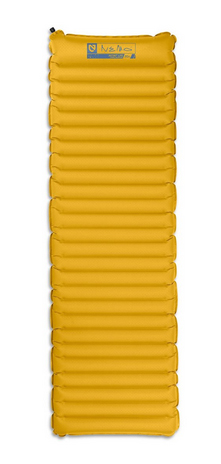
For those who want to buck the Therm-a-Rest trend, lesser-known outdoor gear manufacturer Nemo makes quality sleeping pads at slightly cheaper prices. The Astro Air Light is the company’s leading backpacking model, weighing in at 14 ounces for the regular (2 ounces more than the Therm-a-Rest XLite but less than the XTherm). Earlier Nemo sleeping pad models were on the skinny side, but the company added some width to make the Air Light a standard 20 inches. Nemo rates the Astro Air Light as having a 35-45°F minimum temperature zone, making it a nice three-season sleeping pad option for just over $100. For more warmth, an insulated version of the Nemo Air Light is available.
Weight: 14 oz. (regular)
What we like: Cheaper than Therm-a-rest pads.
What we don’t: Fewer sizes to choose from.
![]()
Sleeping Pads for Car Camping
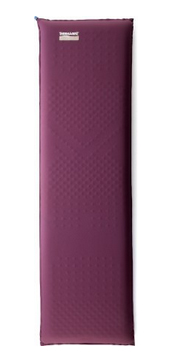
Therm-a-Rest LuxuryMAP (from $99)
If you’re camping close to the car and weight isn’t a concern, you won’t find a more comfortable sleeping pad than the Therm-a-Rest LuxuryMAP. With three inches of cushion and no skimping on materials and insulation, the LuxuryMap will keep you cozy in a variety of conditions. This pad uses a combination of high and low density foams for maximum body support, making it the most comfortable pad on this list. With a weight of over 3 pounds for the regular and a whopping 5 pounds for the extra large, this certainly isn’t a sleeping pad for backpacking. It is, however, an excellent car camping option for those who value comfort.
Weight: 3 lb. 4 oz. (regular)
What we like: Extremely comfortable.
What we don’t: Very heavy.
![]()
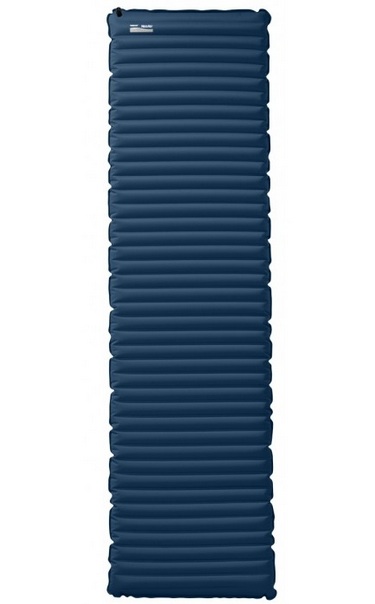
Therm-a-Rest NeoAir Camper (from $99)
Sleeping pads for car camping are thicker and provide greater comfort than their backpacking counterparts, but they also are bulkier and don’t pack down it easily in your bag. With a respectable weight of around 1.5 pounds for the regular, the NeoAir Camper is great sleeping pad for camping and doubles as a decent option for backpacking. We like the large size best, which is 77 inches long and 25 inches wide, providing ample space for stretching out and movement throughout the night. With the NeoAir Camper you don’t get the insulation of some of the more expensive pads, but it’s a nice three-season option (this is when most people car camp anyway). Compared to lighter weight Therm-a-Rest sleeping pads, the NeoAir Camper offers an extra half-inch of cushioning with an an inflated height of 3 inches.
Weight: 1 lb. 8 oz. (regular)
What we like: Thicker than a pad for backpacking.
What we don’t: Nothing.
![]()
Budget Sleeping Pads
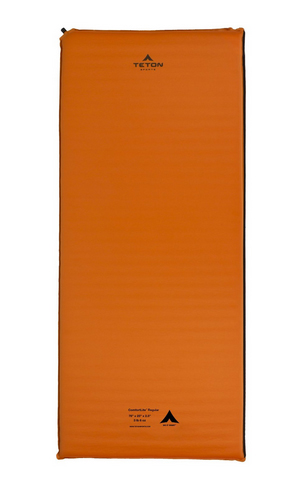
TETON Sports ComfortLite (from $64)
It’s tough to find a decent self-inflating sleeping pad for under $100, but the Teton Sports ComfortLite is just that. Blending foam, air, and a microfiber lining, the ComfortLite provides good warmth and comfort for camping and backpacking. A unique feature is the Velcro strip that runs along the side, making it possible to join two pads together to create one extra wide pad (this works well for two people or one person who wants more room). For the price, the self-inflation technology works well and the pad is durable enough to last for multiple seasons. One shortcoming of the ComfortLite is that it is heavy for a backpacking pad at close to three pounds and doesn’t pack down as small as some of the options above.
Weight: 2 lb. 12 oz. (regular)
What we like: Cheap for an inflatable pad.
What we don’t: Bulky and heavy for backpacking.
![]()
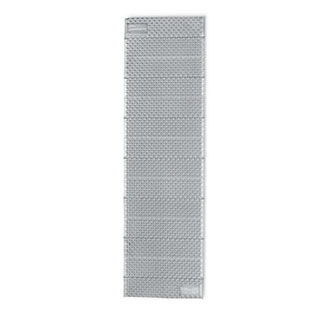
Therm-A-Rest Z-Lite Sol Sleeping Pad ($35)
For backpackers who prioritize weight and ease of use over comfort, the Z-Lite Sol is an excellent budget option. This closed-cell foam sleeping pad weighs only 14 ounces for the regular, making it the lightest pad on this list. It is a three-season pad and won’t provide much warmth in cold conditions, but is well suited for summer backpacking trips and decent weather in the spring and fall. We like how the Z-Lite Sol the folds like an acordian, which makes morning packing in the tent a matter of seconds instead of minutes. It’s also nice to easy the Sol for sitting during lunch breaks, and the closed-cell is relatively tough and easy to clean. For an even cheaper foam option, try the Therm-A-Rest Ridge Rest SoLite.
Weight: 14 oz. (regular)
What we like: A great value.
What we don’t: Not as comfortable as inflatable sleeping pads.
![]()
